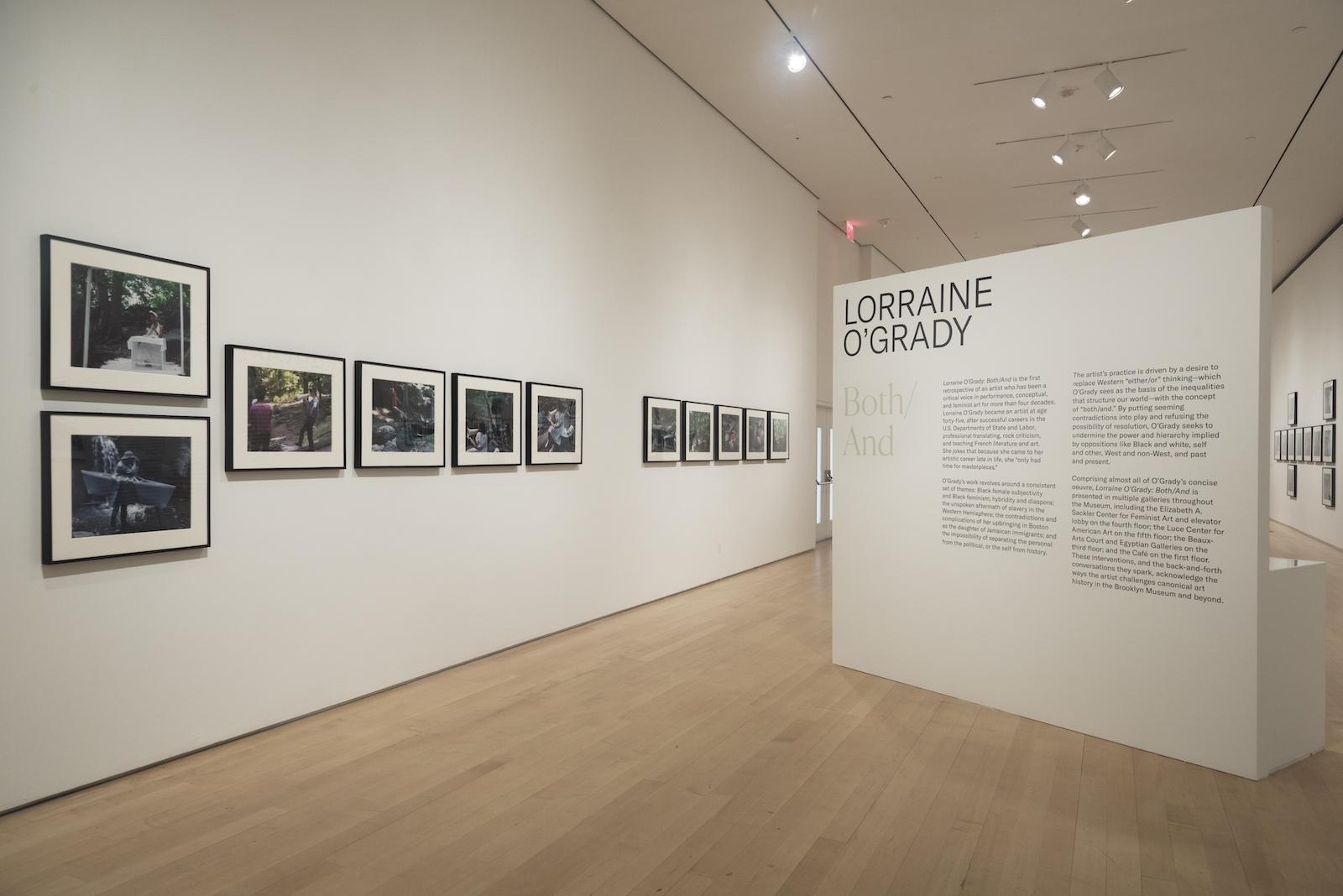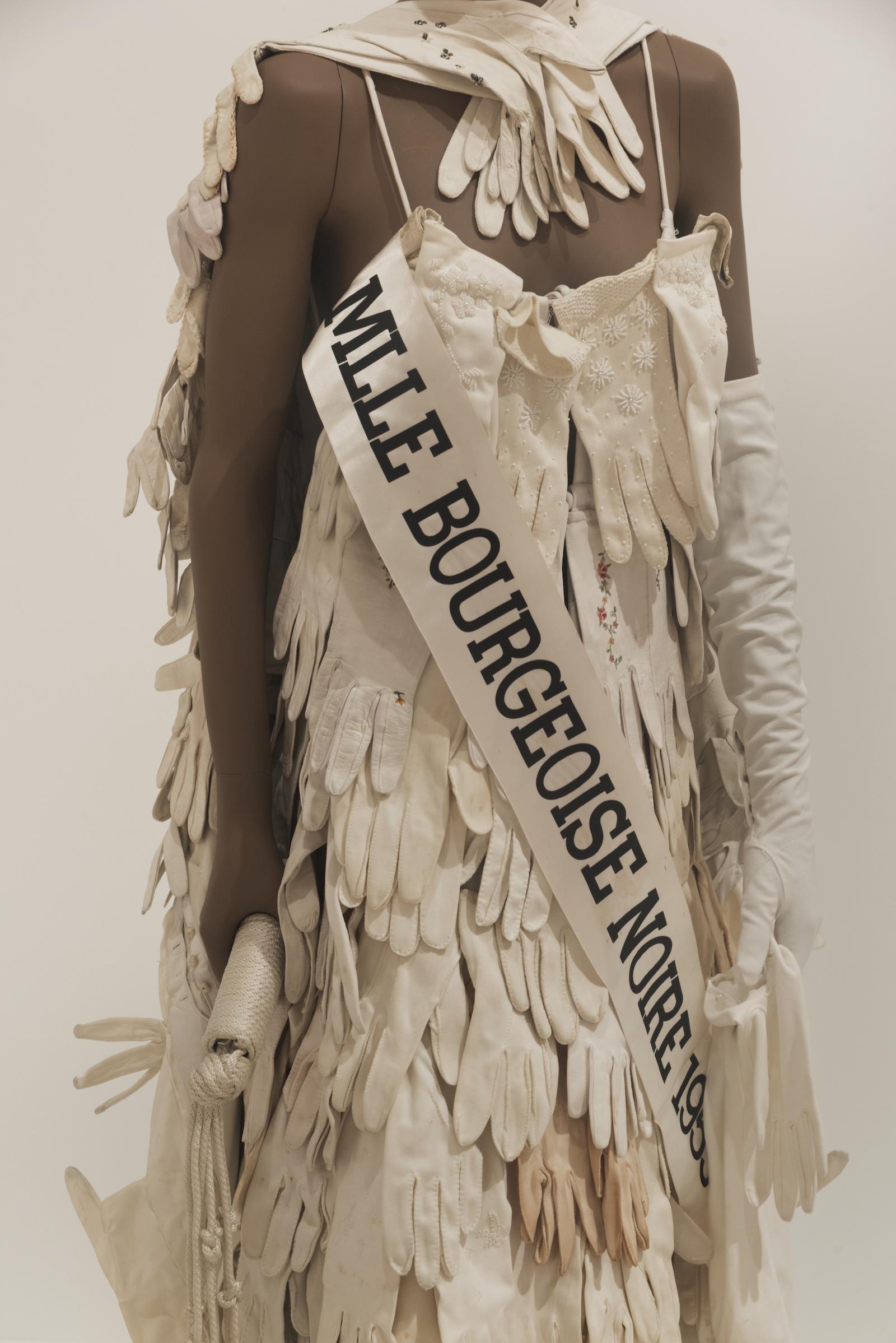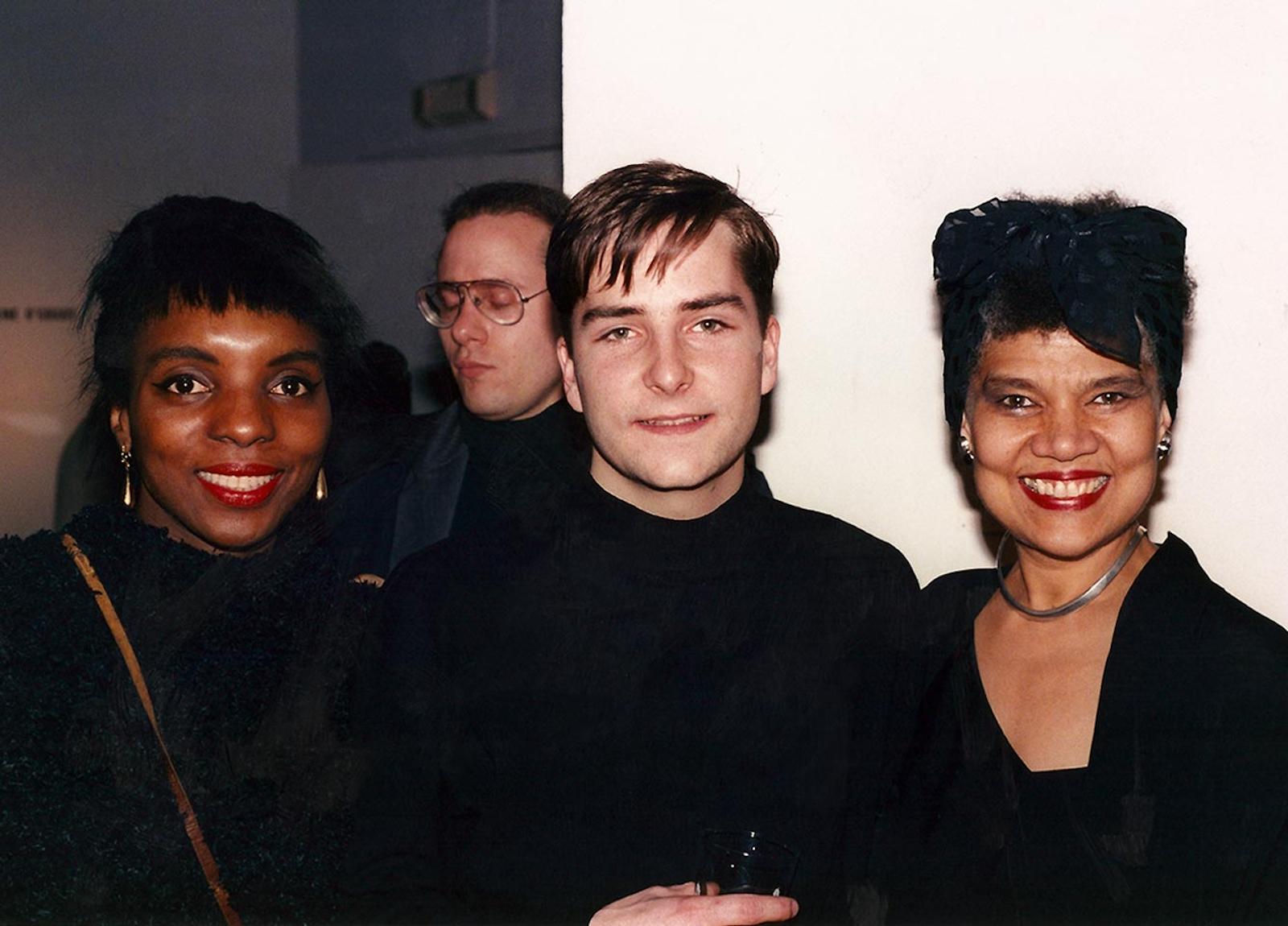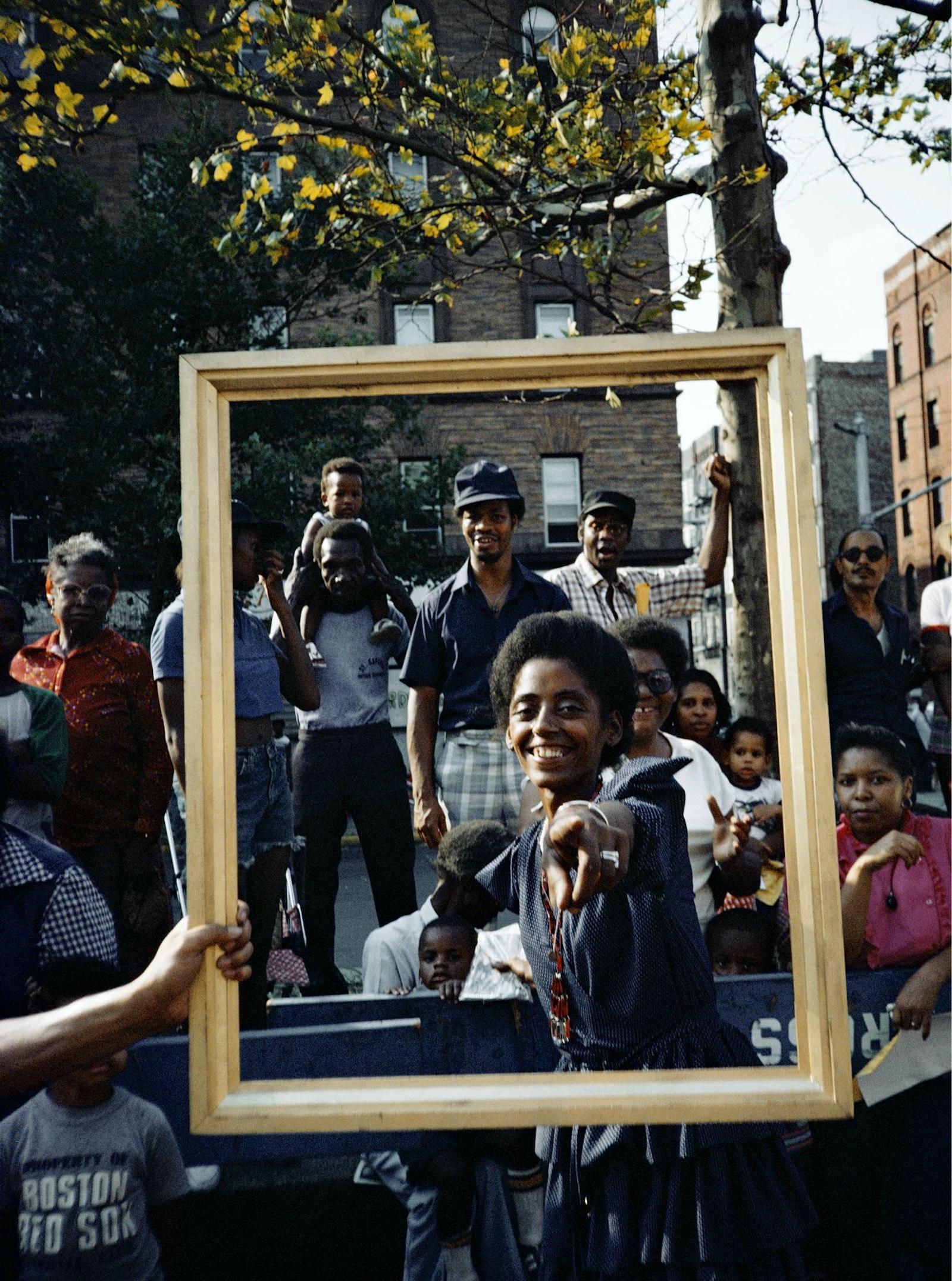Born in Boston to Jamaican parents, O’Grady’s career has been eclectic. She’s had jobs as a translator, music critic, and intelligence analyst for the American Government. Later she’d blaze a trail as a performance artist for a decade before being featured in her first solo visual arts exhibition, Body is the Ground of My Experience in 1991, presented at the INTAR Gallery in New York City, when O’Grady was fifty-seven.
One of the exhibition’s diptychs proved controversial. On one side, an interracial couple embraces as they float above two children frolicking below, a gun lying nearby. On the other, a man wearing medieval armor, with a skull for a head, fondles a Black woman’s breast. Her eyes are rolled back as if dead, or uninterested.

































